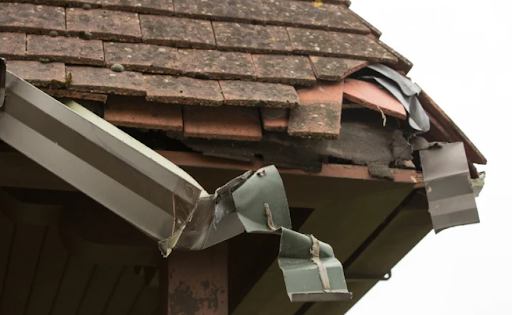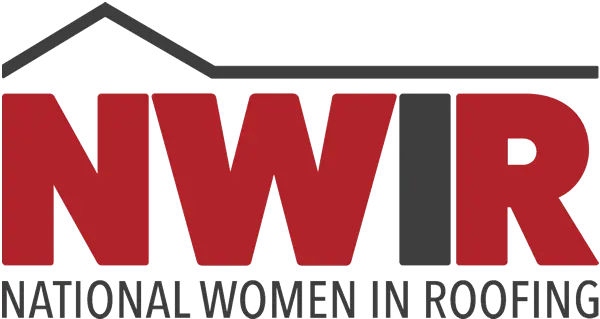What To Do When Your Roof Has Hurricane or Storm Damage?

When a storm strikes and it’s because of high winds, flying debris, hail, or torrential rain, your roof often takes the first hit. However, the real challenge comes after the skies calm, when you’re left wondering what to do next. Should you wait and hope nothing happens, or act right away? A good roof hurricane damage checklist can help you stay safe, protect your home, and make smart decisions.
In this article, you’ll learn how to inspect your roof after a storm, document damage for insurance, choose a trusted contractor, and decide whether you need immediate repairs or a full replacement. We’ll walk you through key steps so you know exactly what to do when you fear your roof has storm damage. Contact us for a free inspection today!
1. Stay Safe and Secure Immediately After the Storm
Your priority is safety. Even if you don’t yet see damage, your roof may have hidden damage such as nails popped up, shingles loose, or flashing bent. Before you climb a ladder or walk on the roof, make sure the area is safe and the weather has passed.
- Wait until winds, rain, and lightning are fully gone before venturing onto or near your roof.
- Walk around the perimeter of your home to check for fallen tree limbs, power lines, or large debris that may have struck your roof.
- Don’t step onto wet roof surfaces. Many post‑storm injuries come from slips or unstable footing.
- Use a ladder only if you are sure it’s safe. When in doubt, leave the inspection to a professional.
Once it’s safe, you can begin your roof hurricane damage checklist.
2. Conduct a Visual Roof Inspection and Document Everything

After you’ve secured your own safety, the next step is to assess and document the damage. The more evidence you gather, the easier the insurance process and the better your decision‑making.
Here are key areas to check:
- Roof surface: Look for missing, cracked, or curled shingles. High winds can lift shingle edges and tear off protective layers.
- Tree debris or impact damage: Branches or large debris may have struck your roof, causing hidden punctures or cracks.
- Interior signs: Inspect your attic, ceilings, and light fixtures for water stains or moisture.
Make sure to take photos or videos from multiple angles. Create a running list of what you see and when you saw it. This documentation becomes useful for insurance claims and contractor estimates.
3. Contact Your Insurance Provider and Check Your Policy
With your initial inspection complete, the next move is to contact your homeowner’s insurance provider, especially if you believe you have significant storm damage. Getting a claim filed early can help you avoid insurance denials.
Consider the following:
- Ask if your policy covers “storm damage,” “wind damage,” or “hurricane roof damage.” Insurance language matters.
- Send the photos and documentation you collected. Your insurer may send an adjuster or ask you to hold off on repairs until inspection.
- Confirm deadlines for claims. Some policies require damage to be reported within a certain timeframe.
- Get an estimate or at least a preliminary look from a trusted roofing contractor so you’ll be prepared. Many companies offer free inspections after storms.
Having the numbers ready helps you avoid overpaying or getting stuck with a repair that insurance won’t cover. Proper documentation also helps distinguish between “normal wear and tear,” which policies often exclude, versus “storm damage,” which may be covered.
4. Decide: Repair What’s Needed or Replace the Roof Entirely
So you’ve identified damage and talked to your insurance provider. Now comes a big decision: can the damage be repaired, or is full roof replacement the right path? Here are factors to consider:
- Extent of damage: If only a few shingles were lost and the deck is intact, repair may suffice. However, if the damage is widespread, the deck is exposed, or flashing is compromised, replacement might be safer.
- Age of roof: Older roofs are more likely to fail soon. If your roof is near or beyond its expected lifespan, replacement may be the best investment.
- Hidden damage: Moisture, rot, or structural damage found in the attic means repairs may just be a band‑aid.
- Cost comparison: Sometimes repair costs stack up quickly and full replacement offers longer‑term value and fewer worries.
- Energy and performance upgrades: Storm damage gives you a chance to upgrade to more wind‑resistant, energy‑efficient materials while replacing the roof.
Making this decision with a reputable professional ensures you’re not overspending on unnecessary replacement or underspending and facing another costly roof failure later.
5. Hire a Licensed, Local Roofer With Storm Damage Experience
Not all contractors are equipped to handle storm‑damaged roofs. Choose a roofer who knows your area, has experience with storm damage, and is properly licensed and insured, like King Roofing.
Here’s how to vet your contractor:
- Confirm they’re licensed in your state and fully insured.
- Get a detailed estimate with scope of work, materials, timeline, and any warranty offered.
- Ensure they’ll handle debris, protect your landscaping, secure permits, and clean up when finished.
- Ask whether they’ll coordinate with your insurance adjuster and provide documentation to support your claim.
Storm seasons mean many contractors get busy. Beware of overly aggressive “discount” offers or pushy sales tactics. If something sounds too good to be true, it probably is.
6. After the Work: Clean‑Up, Verification & Follow‑Up
Once repairs or replacement work is done, don’t just assume the job is finished. There are critical steps you should take:
- Do a visual walk‑through with the contractor and ask questions about what was done and why.
- Request the final invoice, warranty documentation, and any material warranty information.
- Periodically inspect your attic and ceilings over the next few weeks for any signs of lingering leaks or moisture.
- Clear debris and maintain the roof fascia and roof edges so your system remains effective in future storms.
- If you filed an insurance claim, keep copies of all receipts and before and after photos. They may be needed for verification or future claims.
These follow‑up steps help ensure the work was done right and that your home remains protected long term.
7. Prepare for the Next Storm Season: Prevention and Maintenance
Storm damage is stressful, but recovery also offers an opportunity to better prepare your home for the next big event. Consider these preventive steps:
- Trim trees and remove weak branches that could fall and damage the roof.
- Inspect and clean your gutters, downspouts, and roof drains to ensure water can flow freely.
- Make sure your attic has proper ventilation and insulation, which helps reduce heat build‑up and extends your roof’s lifespan.
- Consider upgrading roofing materials to wind‑resistant, impact‑resistant, or wind‑uplift‑rated products if your area is prone to storms.
- Create and keep a home maintenance log of roof inspections, repairs, and any storm damage, so you can spot recurring patterns or vulnerabilities.
By treating your new roof or repaired roof as a system, you’ll be better positioned when the next storm looms.
Roof Hurricane Damage Checklist
To make storm recovery easier, here’s a printable roof hurricane damage checklist you can use to document and track your next steps after a major storm or hurricane:
| Task | Description | Check |
| 1. Inspect the Roof from the Ground | Walk around your home and look for visible damage like missing shingles, debris buildup, or sagging sections. | ☐ |
| 2. Check Attic or Ceilings | Look inside for water stains, leaks, or damp insulation indicating possible roof penetration. | ☐ |
| 3. Document All Damage | Take clear photos and videos of any affected areas. Both exterior and interior. | ☐ |
| 4. Avoid Climbing on the Roof | Stay off the roof unless you’re trained. Let professionals handle inspections safely. | ☐ |
| 5. Contact Your Insurance Company | Notify your insurance provider as soon as possible to begin the claims process. | ☐ |
| 6. Call a Roofing Contractor | Schedule a certified inspection from a local roofer who understands storm damage. | ☐ |
| 7. Cover Exposed Areas | If safe, use tarps to temporarily cover exposed roof areas and reduce water damage. | ☐ |
| 8. Keep All Repair Receipts | Save estimates, invoices, and receipts to support your insurance claim. | ☐ |
| 9. Request a Full Roof Assessment | Ensure the contractor checks for hidden damage under shingles or decking. | ☐ |
| 10. Follow Up on Warranty or Insurance | Ask about what’s covered; your roof may still be under warranty or meet policy terms. | ☐ |
Why Choose King Roofing After Storm Damage?
King Roofing has over 45 years of experience helping Florida homeowners recover quickly and safely after a hurricane or major storm. We understand the urgency, the paperwork, and the pressure, especially when dealing with insurance companies.
Here’s what sets us apart:
- Fast Emergency Response: We show up quickly when your roof is leaking or exposed. Temporary tarping and emergency repairs are available right away.
- Licensed and Insured Professionals: Our crews are fully licensed and insured. You can trust that the work meets local building codes and safety standards.
- Experience With Storm Damage Claims: We’ve worked with hundreds of homeowners navigating insurance claims. We’ll help document damage and communicate with your adjuster to avoid delays.
- No-Pressure Estimates: After your inspection, we give you a clear quote—no pushy sales talk. Just honest recommendations on what your roof really needs.
- High-Quality Materials: We use wind-rated, Florida-approved shingles and roofing systems built to handle our weather.
Storm damage is stressful. We make the repair or replacement process simple and reliable.
What’s Next?
Storm damage to your roof is a serious matter. Acting quickly with a proper inspection, documentation, and hiring a trusted roofer can save you thousands of dollars and relieve stress. Whether you need a patch job or a full replacement, being proactive makes all the difference. If your home has recently experienced hurricane or storm damage, don’t wait. Contact King Roofing for a full inspection, free estimate, and professional advice from a contractor who knows storms, knows roofs, and cares about your home.











